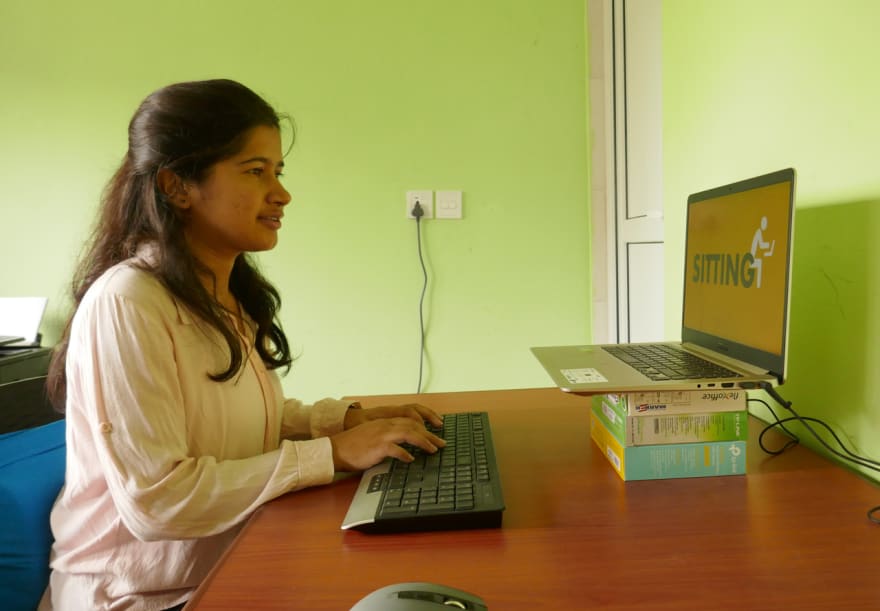As our work-equipment is a computer, we are sitting A LOT. Counting the hours we spend sitting (while working, commuting to work, eating, communicating with friends, watching TV,…) we likely end up with 14 hours per day!
So we should be aware of this: Prolonged sitting causes serious health problems!
Here are the main effects on us (anything sounds familiar?):
- pain (headache, lower back-pain, neck- and shoulder-pain)
- cardio vascular diseases
- obesity and diabetes
- weak muscles and bones
- a higher risk of cancer
- increased mortality
And – closely connected to those effects – sitting has a negative impact on our emotions, can lead to depression, decreases our ability to concentrate and therefore reduces our productivity!
Simply by sitting we loose on our vitality, health, work performance, joy and life span!
Is there a way out?? Yes!
First – and most important: MOVE!
Get up from your chair as much as possible! As a guideline: Take a break from sitting at least once every hour. To do so, create reasons to get up and change your habits! Here are some examples, that are easy to put into practice:

- Set your alarm every hour and do some movements (like stretching, squats, walking up some stairs,…).
- Make a detour, if you go to the toilet or get some coffee / tea.
- Stand up while you are talking on the phone or processing thoughts.
- Stand or walk while you have conversations with your colleagues – a good opportunity to share with your co-workers the risks of prolonged sitting. Why actually is the position of choice for meetings always sitting? If everybody would stand, maybe some meetings even would be more productive and less long!
- Place the printer somewhere so that you are forced to get up in order to get the printout.
- If possible, set up a workplace with a standing desk, so that you can change between sitting and standing during the day.
Even if you receive strange looks from others in your workplace – keep in mind, that you are investing in your health, your mood and your work performance!
Second – ADJUST!
One reason for getting sick while sitting can be the inappropriate height of your chair and desk. The “hardware” for your sitting position needs to fit to your individual body shape. If you do it the other way around (for example your body makes compensations for a table that is too high), you will end up with health problems. So adjust your workplace (desk, chair, screen) to enable a good sitting position. The graphic below shows the basic points for ergonomic sitting:

Ideally you would start to choose a chair, that fits to the length of your lower leg. After that you choose a desk, that is as high as your elbows are while sitting on this chair. But quite often you can’t change / adapt your desk. Then you need to adjust the height of your seat (with a cushion, towel or folded blanket) and the floor-level (by putting a box or footrest under your feet). The guideline for the height of your seat is the height of your elbow in relation to the desk.
The screen adjustment is quite simple, but will have a big impact on your back, neck and eyes:
- Adjust the height of the upper edge to your eye-level (just stack some books under your screen).
- Make sure that the screen has an arm's length (about 50 cm) distance to your upper body.
If you are working with a laptop, please buy an external keyboard! Your health should be worth the money. And if you are an employer, buy an external keyboard and an external screen for your employees - the increased productivity will easily make up for the extra expense!
Third – BALANCE!
Reduce your sitting time outside of work hours and balance your free-time! Change your patterns and create reasons for moving more and sitting less. Here are some examples:
- Walk or cycle to your workplace or when you go for shopping.
- If the distance is too far: get off the bus earlier and walk the last 1-3 kilometre.
- Go for a walk in your lunch break.
- Prepare your food at home while standing.
- When you are chatting with or meeting friends: stand, walk or do any activity together (anything besides sitting...).
- Schedule time for sports. Recommended weekly physical activity is 150 minutes of moderate or 75 minutes of intense cardio workout. 150 minutes per week equals 20 minutes per day or 30 minutes 5 days per week of moderate workout (like brisk walking, going for a moderate cycle-ride, doing an online aerobics-class, dance to your favourite music,…). It’s ideal to have a good mixture of exercises like cardio-workout, stretching-exercises, strength-training and balance-exercises. If you want to get deeper into that, look here. Sports doesn't undo the harms of prolonged sitting though. We still need to break up our prolonged sitting at work!
MOVE, ADJUST and BALANCE
It takes some effort and change of habits from your side, but it will have a BIG positive impact! If you struggle to implement new patterns in your daily life, the best thing to do is: partner up with someone and encourage each other!
And always remember YOUR REWARD: you will have less pain, can concentrate better, perform well, are in a good mood, get sick less often, have more energy in your free-time, less likely suffer from chronic diseases and live longer!
Let’s sit less and move more!










Top comments (0)